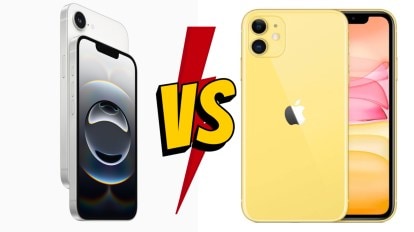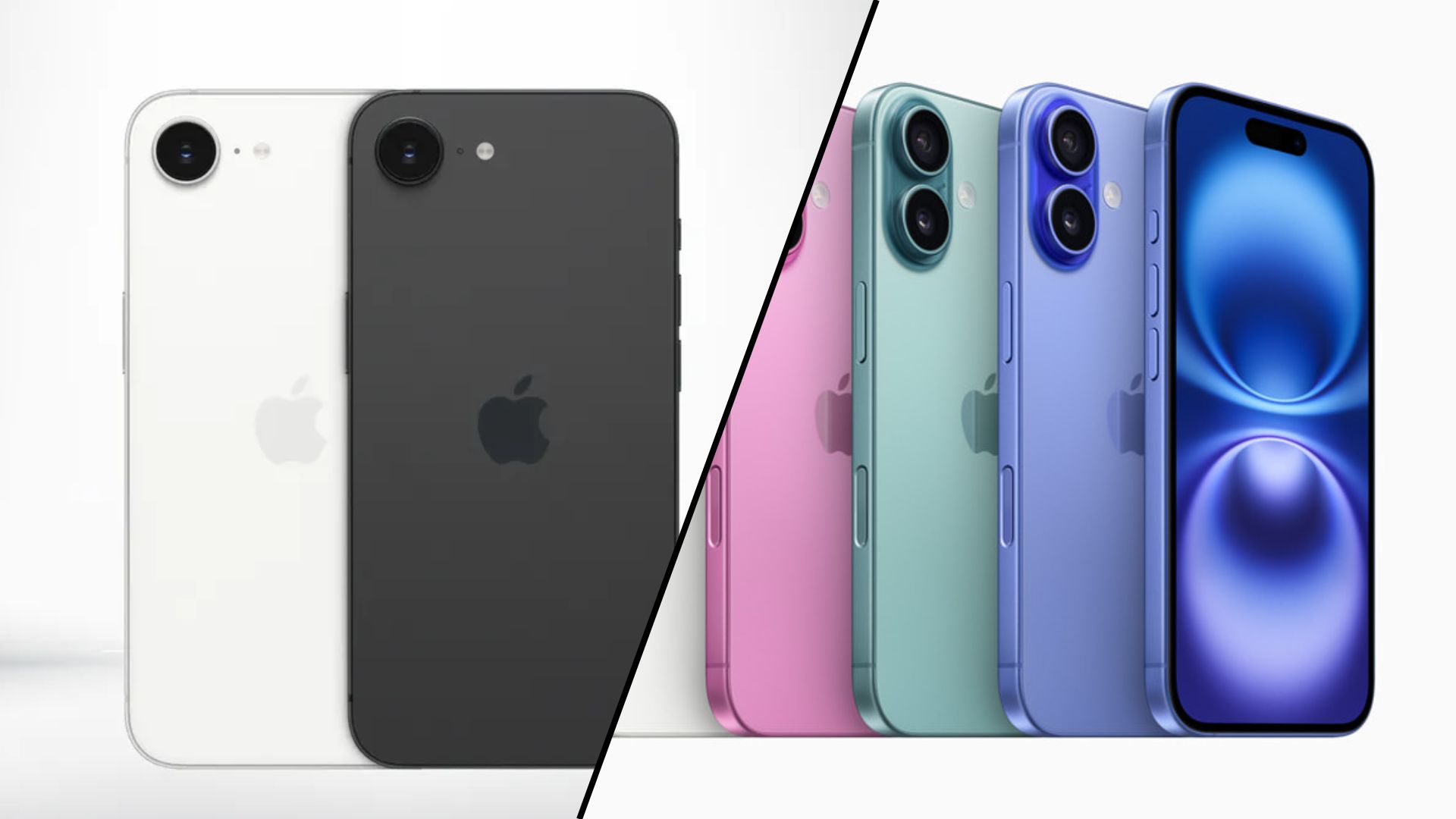Are you thinking about upgrading your iPhone? With the release of the iPhone 16E, you might be wondering: is it really worth it?
The iPhone 11 has been a reliable companion for years, but technology moves fast, and Apple’s newest model promises exciting changes. But what’s hype, and what’s truly groundbreaking? We’ll break down the real differences between the iPhone 11 and the iPhone 16E.
From design and performance to battery life and camera upgrades, we’ll help you decide if the jump to the iPhone 16E is worth your hard-earned money—or if your iPhone 11 still holds its ground. Keep reading to make the smartest choice for your lifestyle and budget.
Quick Navigation
Design And Display
The iPhone 11 and iPhone 16E stand years apart in design evolution. Apple has introduced significant changes in the display and body over the years. Let’s dive into what sets these two models apart in terms of design and display.
Design Changes: Rounded Vs. Sleek Edges
The iPhone 11 features rounded edges and a familiar curved body. It’s comfortable to hold but feels slightly bulkier. The iPhone 16E, on the other hand, boasts flat edges and a slimmer profile. This gives it a more modern and premium look. The aluminum finish on the 16E feels lighter yet sturdy compared to the 11.
Apple has also reduced bezel size significantly in the 16E. This creates a more immersive experience. The camera bump on the 16E is smaller and blends seamlessly with the back. This offers a cleaner, more minimalist aesthetic.
Display Technology: Lcd Vs. Oled
The iPhone 11 comes with a Liquid Retina LCD display. It delivers good color accuracy but lacks contrast depth. The iPhone 16E features an advanced OLED display. This technology provides richer colors and deeper blacks. It also supports higher brightness levels, making it easier to see in sunlight.
The 16E’s display includes ProMotion technology for a 120Hz refresh rate. This ensures smoother scrolling and better responsiveness. Compared to the 11’s 60Hz refresh rate, it feels more fluid and modern.
Screen Size And Resolution
The iPhone 11 has a 6.1-inch screen with a 1792 x 828 resolution. This works well for everyday tasks but isn’t very sharp for media. The iPhone 16E offers a slightly larger 6.2-inch screen. Its resolution is much sharper at 2532 x 1170 pixels. This improvement enhances video playback and gaming visuals.
Apple has also added HDR10 and Dolby Vision support on the 16E. These features bring cinematic quality to movies and shows. The 11 lacks these modern display capabilities, making it feel outdated in comparison.

Credit: www.apple.com
Performance And Features
When comparing the iPhone 11 to the iPhone 16E in 2025, it’s clear that Apple has made strides in performance and features. But are these changes worth upgrading for? Let’s dive into what truly sets these two devices apart in terms of speed, functionality, and everyday usability.
Processor Power: A Noticeable Leap
The iPhone 16E is powered by Apple’s A18 Bionic chip, while the iPhone 11 runs on the A13 Bionic chip. The difference is massive when it comes to speed and efficiency. Apps on the iPhone 16E launch almost instantly, and multitasking feels seamless, even with resource-heavy applications.
On the other hand, the iPhone 11, while still reliable for basic tasks, struggles with more demanding ones like video editing or gaming. The A18 chip also brings better AI capabilities, which improve features like real-time photo editing and voice recognition. If performance speed matters to you, the iPhone 16E is a clear winner.
Battery Life: Efficiency Over Size
The iPhone 16E uses a more efficient battery system, giving you up to 20% more screen time compared to the iPhone 11. This isn’t just because of a larger battery—it’s the A18 chip’s energy optimization at play. You’ll notice the difference during long days when you forget to charge your phone.
In contrast, the iPhone 11’s battery can drain faster, especially when running power-hungry apps. The 16E also supports 30W fast charging, which means less time tethered to a cable. If you’re tired of always carrying a charger, this upgrade could change your routine.
Display: Brighter And Smoother
The iPhone 16E features a ProMotion 120Hz display, making animations and scrolling feel buttery smooth. The iPhone 11, with its 60Hz display, feels slower in comparison. Whether you’re gaming or simply swiping through apps, the difference in fluidity is immediately noticeable.
Brightness is another area where the 16E wins. Outdoor visibility is significantly better thanks to the 16E’s improved OLED panel. If you’re someone who spends a lot of time outdoors, you’ll appreciate the clarity this brings to your screen.
Camera Features: More Than Just Megapixels
The iPhone 16E introduces advanced computational photography, giving you sharper and more detailed images even in poor lighting. While the iPhone 11’s dual-camera system is still impressive, it can’t compete with the 16E’s triple-camera setup, which includes a periscope zoom lens.
You’ll also find new video features like cinematic mode in 4K on the iPhone 16E. This makes creating professional-quality videos easier than ever. If photography or video production is a big part of your life, the iPhone 16E might be the upgrade you’ve been waiting for.
Is The Upgrade Worth It?
When you think about performance and features, the iPhone 16E offers significant improvements. But ask yourself—are these upgrades essential for you? If you use your phone for basic calls, texts, and occasional browsing, the iPhone 11 might still hold up well in 2025.
However, if you’re someone who relies heavily on speed, camera quality, or battery efficiency, the 16E is hard to pass up. The choice depends on how much value you place on staying current with technology. What matters more to you—keeping what works or embracing what’s next?
Battery And Longevity
The battle between the iPhone 11 and iPhone 16E in 2025 raises many questions. One critical area to explore is battery performance and longevity. This feature impacts daily usability and overall satisfaction for users. Let’s break down the differences in this crucial category.
Battery Capacity
The iPhone 11 comes equipped with a 3110mAh battery. It provides decent usage for moderate tasks. The iPhone 16E, on the other hand, boasts a larger 4000mAh battery. This means extended usage for demanding apps and longer screen time. The upgrade in capacity offers noticeable improvement for heavy users.
Charging Speeds
The iPhone 11 supports 18W fast charging. It takes over an hour for a full charge. The iPhone 16E introduces 30W fast charging technology. This reduces charging time significantly. Users can expect faster power-ups during busy schedules.
Battery Life Optimization
The iPhone 16E uses advanced AI to manage energy consumption. This software feature adjusts background processes to save power. The iPhone 11 relies on less refined optimization tools. As a result, the iPhone 16E delivers longer hours of uninterrupted performance.
Longevity And Durability
The iPhone 16E battery retains up to 80% capacity after five years. This ensures a reliable device lifespan for users. The iPhone 11 retains similar capacity but struggles under heavy usage over time. The newer battery technology in the iPhone 16E offers greater reliability for long-term use.

Credit: indianexpress.com

Credit: www.laptopmag.com
Frequently Asked Questions
Is It Worth Upgrading From iPhone 11 To 16e?
Upgrading to iPhone 16e is worth it for better performance, advanced features, improved camera, and longer software support.
Is The iPhone 11 Still Supported In 2025?
Yes, the iPhone 11 is expected to receive updates and support in 2025, as Apple typically supports devices for 5–6 years.
What iPhone To Buy In 2025?
Buy the latest iPhone model released in 2025 for the best features, performance, and software updates. Choose based on budget.
Is The iPhone 11 Too Outdated?
The iPhone 11 is not too outdated. It still offers great performance, decent camera quality, and regular iOS updates.
What Are The Key Differences Between iPhone 11 And iPhone 16e?
IPhone 16E offers improved camera, faster processor, better display, and longer battery compared to iPhone 11.
Conclusion
Choosing between the iPhone 11 and iPhone 16E depends on your needs. The iPhone 16E offers advanced features and better performance. On the other hand, the iPhone 11 remains reliable for basic tasks. Consider your budget and how you use your phone daily.
Upgrading might make sense for tech enthusiasts or heavy users. For casual users, the iPhone 11 still holds value. Both phones have their strengths, so weigh your options carefully. Remember, the best choice is the one that fits your lifestyle.
Technology evolves quickly, but practicality matters most.
